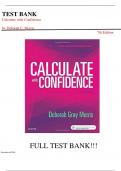Samenvatting
Summary of the lectures and video clips / samenvatting hoorcolleges en videoclips - Quantitative Methods exam
- Vak
- Instelling
Summary of the lectures and video clips. Everything we need to know for the 1.4 Quantitative Methods exam.
[Meer zien]












